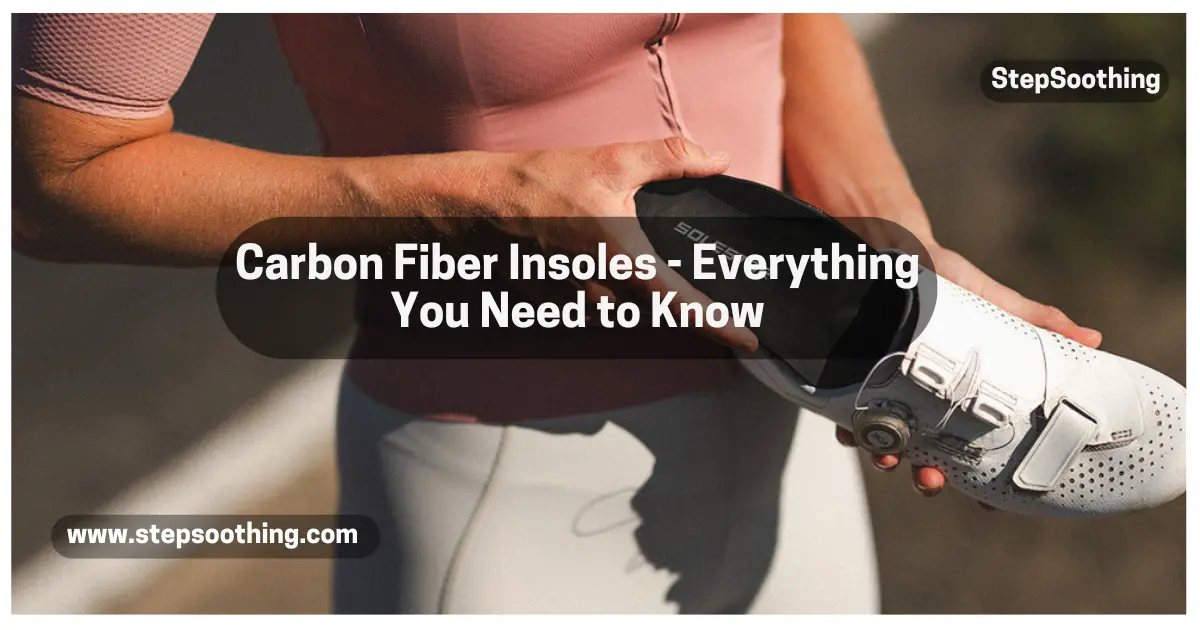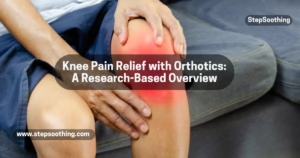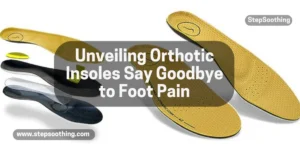What if the secret to better performance is right under your feet? Whether you’re a weekend warrior or an elite performer, your footwear matters. It can make or break how you move, train, and recover.
The problem? Most insoles don’t keep up. They wear out, don’t return energy. They fail to support your arch, heel, and forefoot when it matters most. That means more fatigue, more injuries, and slower results.
Enter carbon fiber insoles. Built from PAN-based carbon fiber, a high-tech organic polymer, they are lightweight, durable, and stronger than steel by weight. This material is used in aerospace, automotive, and military gear. Now, it’s in your shoes.
These insoles absorb shock. They help you push off, run faster, and jump higher. They’re designed for performance and comfort, whether you’re playing pickleball, training for a race, or recovering from an injury.
Carbon Fiber Insoles: A Revolution in Footwear
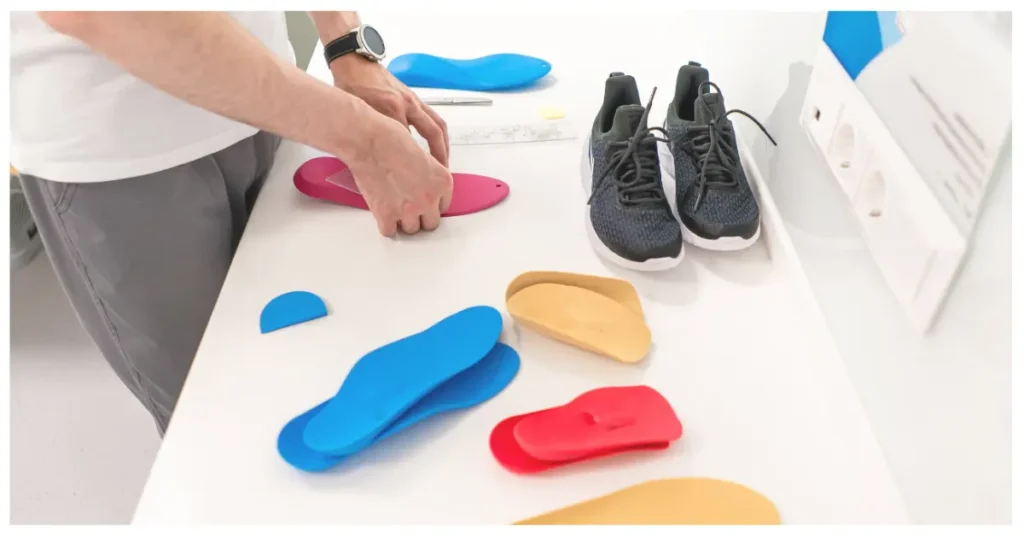
What Are Carbon Fiber Insoles?
Carbon fiber insoles are a revolutionary upgrade in footwear that offers a unique combination of strength, durability, and flexibility. These insoles are crafted from carbon fiber, a composite material produced from polyacrylonitrile (PAN), an organic polymer characterized by long strings of molecules bonded together by carbon atoms. The same technology advancing fields like aerospace, automotive, and military is now helping athletes enhance their performance while reducing injuries.
These insoles come in two basic types. Flat plates, usually single-layer and rigid, are designed to immobilize the foot, acting as a splint for those recovering from injuries like stress fractures, turf toe, and Hallux Limitus. On the other hand, cushioned models feature a foam top cover for comfort and arch support, commonly used for high arches and conditions like plantar fasciitis. Unlike standard inserts, which wear out quickly, carbon fiber insoles are stronger and more durable, ensuring long-term stability and foot protection.
Benefits of Carbon Fiber Insoles
The primary advantage of carbon fiber insoles lies in their ability to improve energy efficiency and return energy that would otherwise be lost during movement. This technology is particularly useful for athletes who require explosive movements, such as jumping, running, and cutting. Unlike foam or plastic insoles that merely absorb shock, carbon fiber insoles store energy and then propel the user forward and upwards, boosting athletic performance.
Moreover, they offer unparalleled support and stability, reducing twisting and torquing forces on the lower leg and ankle. Studies have shown that wearing them can lower the rate of injuries, particularly in high-impact sports. A Division 1 football program reported fewer foot, toe, leg, and knee injuries when players used carbon fiber insoles throughout the season. The Korey Stringer Institute at the University of Connecticut even found that these insoles enhance biomechanics, allowing athletes to run faster, jump higher, and land safely with less stress on their joints.
For those recovering from injuries, these insoles act as protective gear, shielding the forefoot, which is composed of small bones no wider than a pencil in diameter. With every landing and push-off, the foot generates immense force, which can lead to injuries. Carbon fiber insoles help stabilize the lower leg, reducing stress and promoting healthier movement patterns.
Who Should Use Carbon Fiber Insoles?
These insoles are not just for elite performers. Whether you’re a weekend warrior looking to stay active or a professional athlete aiming for unreachable levels of performance, carbon fiber insoles can make a difference. They’re widely used across multiple sports, including football, basketball, pickleball, tennis, cycling, and even by the Olympic Bobsled Team, proving their effectiveness in high-performance environments.
Individuals with foot conditions such as plantar fasciitis, arthritis, and shin splints can benefit from the heel stability and arch support these insoles provide. Many healthcare professionals recommend them as a way to ease pain management, especially for those dealing with big toe ailments or recovering from stress fractures. A recent study from Harvard Mass General found that these insoles help distribute pressure across the foot, reducing stress on the toes and assisting with push-off efficiency.
How to Choose the Right Carbon Fiber Insoles
Not all carbon fiber insoles are the same, and selecting the right one depends on various factors like heel cup depth, arch support, and foam top cover quality. Some insoles are designed primarily for comfort, while others focus on performance, durability, and energy return.
For athletes, VKTRY is a market leader known for its engineered design, which combines flexibility and rigidity, allowing the MTP joint to bend naturally. These insoles are made to propel energy forward, providing an added boost for those involved in sports requiring explosiveness and agility. Tread Labs, on the other hand, offers performance insoles with a full-length baseplate, a foam liner, and a comfortable top cover, making them ideal for those looking for stability and shock absorption without compromising on comfort.
Another key consideration is durability. While plastic insoles may offer short-term support, they degrade faster than carbon fiber insoles, which are rated to last hundreds of thousands of cycles.
Whether you’re a professional athlete or someone simply looking to reduce fatigue at work, you can step up your sports performance with tailored custom insoles made to match your needs and activity level.
How to Use and Maintain Carbon Fiber Insoles
Using carbon fiber insoles correctly can maximize their benefits and extend their lifespan. When first using them, it’s normal to feel pressure on the ball of the foot, especially if switching from softer foam insoles. However, there is a break-in process, and most users adapt after a short time.
To ensure longevity, manufacturers recommend cleaning the insoles every few weeks and inspecting for signs of cracking or wear. Those who use cleated footwear may notice faster abrasion due to repeated contact with the ground, which can reduce their lifespan. However, for general use, these insoles tend to last much longer than foam or gel-based insoles.
If an insole becomes hard or uncomfortable over time, it may be time to replace it. While some insoles maintain their rigid support for years, others may need replacement every few months, depending on how frequently they are used and the type of load they experience.
Many manufacturers offer a money-back guarantee or a 90-day trial period, allowing users to test the insoles and see if they meet their needs. If discomfort persists or worsens, it’s always best to consult a physician, especially if using them as part of a treatment plan for foot injuries.
Common Myths and Misconceptions
Some believe that carbon fiber insoles are only for elite performers or that they are too rigid to be comfortable. However, scientific studies have shown that they help reduce injuries, improve stability, and return energy efficiently.
Another misconception is that they make footwear feel uncomfortable. While they are firmer than traditional foam insoles, their design allows for gradual adaptation, making them ideal for athletes, workers, and those seeking a healthier foot posture.
Best Carbon Fiber Insoles on the Market
Finding the right carbon fiber insoles depends on performance needs, comfort preferences, and budget. With technological advancements, the fastest-growing category in sporting goods now includes high-performance insoles that can enhance athletic performance, improve energy efficiency, and reduce injuries. Below are some of the top brands and models available, along with a comparison of their features, prices, and benefits.
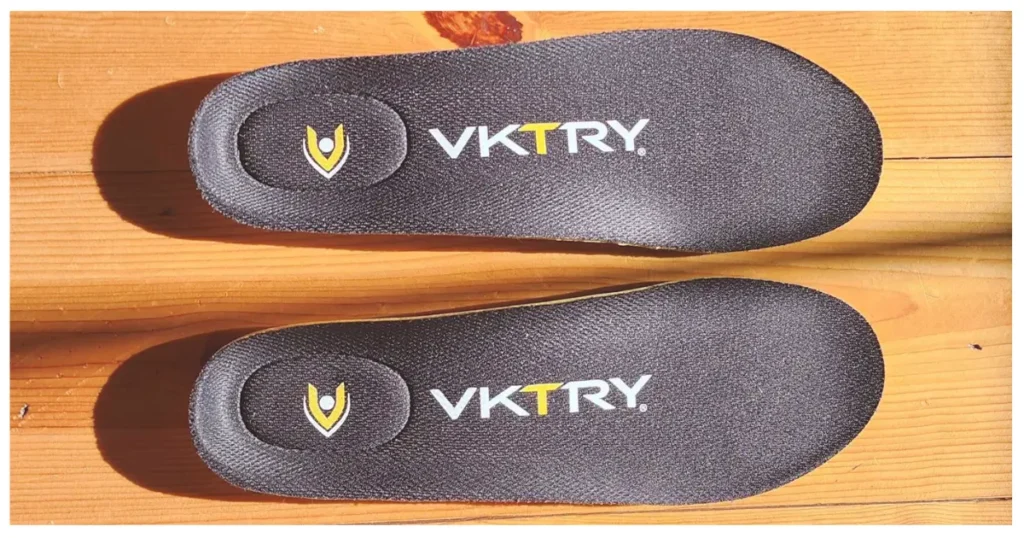
1. VKTRY Performance Insoles
One of the most popular brand VKTRY, is known for its engineered design that helps athletes achieve previously unreachable performance levels. These carbon fiber insoles are designed to store and return energy, giving users an extra spring in their step.
Key Features:
- Full-length carbon fiber baseplate for maximum energy return
- Designed to bend naturally at the MTP joint, making movements more efficient
- Stronger, more durable than plastic or foam insoles
- Scientific studies show improvements in jumping, running, and cutting movements
- Available in multiple stiffness levels depending on user needs
Who Should Buy Them?
- Elite athletes who need a performance boost
- Individuals looking for increased strength, durability, and foot stability
- People who participate in sports requiring quick cuts, explosive jumps, and sprints
Price Range:
- Higher than most generic insoles, but engineered for serious athletes
- Money-back guarantee available for those who want to test them before fully committing
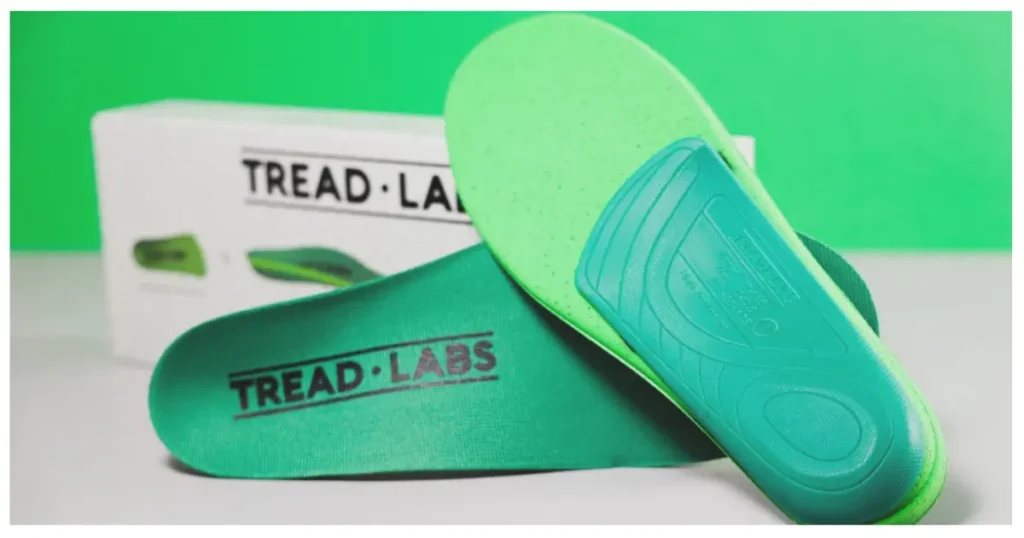
2. Tread Labs Performance Insoles
Another market leader, Tread Labs, focuses on providing long-term comfort, arch support, and stability. These insoles are a great choice for weekend warriors and those looking to upgrade their footwear for daily use.
Key Features:
- Full-length carbon fiber baseplate designed for comfort and stability
- Foam top cover that absorbs shock and provides arch support
- Heel cup design to enhance heel stability
- Lighter and more flexible than other rigid carbon fiber insoles
Who Should Buy Them?
- Athletes looking for a balance of comfort and durability
- People who suffer from plantar fasciitis, shin splints, or foot pain
- Those who need insoles that fit tight-fitting cleats, spikes, or running shoes
Price Range:
- More affordable than VKTRY, making them a good option for those who need everyday support
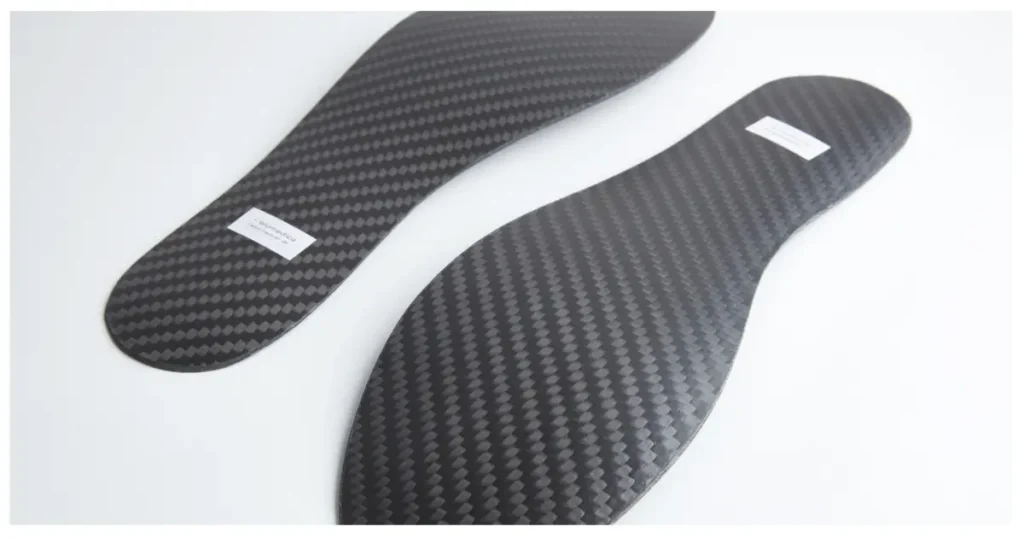
3. Generic Carbon Fiber Plates (Budget-Friendly Option)
For those looking for a cost-effective way to experience the benefits of carbon fiber technology, generic carbon fiber plates are an option. These are thin, rigid inserts that can be placed under foam liners or soft insoles to add stiffness and durability.
Key Features:
- Single-layer carbon fiber plate designed to immobilize the foot
- Effective for treating injuries like turf toe, stress fractures, and Hallux Limitus
- Can be used in multiple types of shoes
- Provides some level of arch support but lacks cushioning
Who Should Buy Them?
- Individuals recovering from injuries that require foot immobilization
- Those who need a budget-friendly option for adding rigidity to their shoes
- People who don’t require extra cushioning but want stiff support
Price Range:
- Much cheaper than performance models but doesn’t offer energy return
Comparison Table: Best Carbon Fiber Insoles
| Brand | Key Features | Best For | Price Range |
| VKTRY | Full-length baseplate, energy return, performance boost | Athletes, jumpers, runners | High |
| Tread Labs | Arch support, foam liner, comfort, stability | Daily wear, foot pain relief | Affordable |
| Generic Plates | Single-layer, rigid, immobilization | Injury recovery, budget buyers | Budget-Friendly |
Choosing the Best Carbon Fiber Insoles for You
When selecting the best carbon fiber insoles, consider your specific needs:
- If you need a performance boost, go for VKTRY.
- If you want comfort and stability, Tread Labs is a great choice.
- If you’re looking for affordable rigid support, generic carbon fiber plates may be the best option.
No matter which brand you choose, carbon fiber insoles are a great investment in foot health, durability, and enhanced movement efficiency.
Where to Buy Carbon Fiber Insoles
You can find them online or at specialty footwear stores. Shopping online offers access to multiple brands, price comparisons, and customer testimonials. However, buying in-store allows you to test arch support, heel cup fit, and comfort levels before purchasing.
Many companies offer a money-back guarantee, so if the insoles don’t meet your needs, you can return them. Some even come with a 90-day trial period, making them a low-risk investment for those looking to upgrade their foot health and athletic performance.
Scientific Studies and Performance Enhancements
Several research studies have documented the benefits of carbon fiber insoles. The Korey Stringer Institute at the University of Connecticut conducted a clinical study showing that these insoles significantly impact biomechanics, reducing force development, increasing explosiveness, and even improving jumping height by a few inches.
A Harvard Mass General study on pain management showed that they assist with big toe stability, helping distribute load more evenly across the foot. This is particularly beneficial for those suffering from shin splints, arthritis, and other ailments.
Why Carbon Fiber Insoles Are the Future of Footwear
With technological advancements, these insoles are now part of the fastest-growing category in sporting goods, used in sports like cycling, football, and pickleball. Even the Olympic Bobsled Team has utilized them to gain an edge in competition, proving that footwear technology can make a difference in elite sports.
Despite their proven benefits, some governing bodies have even banned them due to their ability to increase performance levels beyond what was traditionally achievable. The combination of strength, durability, and energy return makes them an undeniable upgrade for anyone looking to push past their limits.
People Also Asked
1. How are VKTRY Insoles different from regular insoles?
VKTRY insoles feature a full-length carbon fiber baseplate designed to store and return energy, helping athletes jump higher, run faster, and reduce injuries. Unlike foam or plastic insoles, they are stronger, more durable, and engineered to improve performance.
2. What if my VKTRY Insoles don’t fit my shoes properly?
VKTRY insoles come in multiple sizes and stiffness levels, customized based on weight and sport. If the insoles don’t fit properly, minor trimming may be required, or you can exchange them through their return policy.
3. Are VKTRY Insoles suitable for all types of athletes?
Yes, VKTRY insoles are used by elite performers and weekend warriors across multiple sports like football, basketball, cycling, and tennis. They are also beneficial for those recovering from foot injuries or needing extra arch support and stability.
4. Can I wear VKTRY Insoles with custom orthotics?
It depends on the design of your custom orthotics. Since VKTRY insoles are rigid and engineered for energy return, they may not be compatible with thicker, softer orthotics. However, they can sometimes be layered with gel-based or foam liners for added comfort.
5. How do I choose the right VKTRY Insole for my needs?
VKTRY insoles vary in stiffness and flexibility based on weight, sport, and performance level. Entering your sport and weight ensures you get the correct customized fit. If you’re between weight levels, choosing up or down depends on whether you prefer more energy return (go up) or more flexibility (go down).
